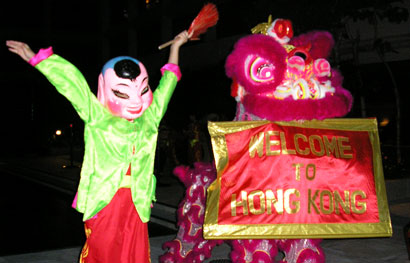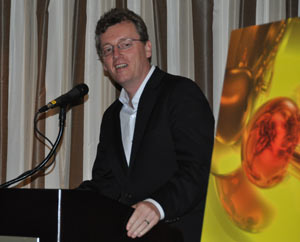The 3rd and final International Conference on Advancing the Chemical Sciences (ISACS) got off to a blistering start in Hong Kong on Tuesday (20th), covering ‘Challenges in Inorganic and Materials Chemistry’.
Following the opening remarks given by the CEO of the RSC, Dr Richard Pike, distinguished Professor of Energy, Daniel Nocera (MIT), introduced the first session. Before introducing the speakers, Professor Nocera praised the new RSC journal, Chemical Science, and it’s flexible format commenting that this style had also been recently adopted by another leading general chemistry journal. Throughout the conference many of the speakers presented results published in Chemical Science.
After the Chair’s opening remarks, Professor Graetzel was introduced and presented on the latest developments in solar energy conversion systems. The energy theme was continued with the second talk, with Professor Jean-Marie Tarascon looking at how chemistry is driving the development of new electrode materials for lithium ion batteries.
The quality of the science continued to impress, with presentations on main group chemistry (Power), single molecule magnets (Long), Carbene chemistry (Hillhouse) and multinuclear sandwich chemistry (Murahashi). Day one ended with a switch to bioinorganic chemistry, with Professor Chris Chang (UC Berkeley) wowing the audience with the latest cutting edge developments in the field of molecular imaging.
Day two continued where day one left off. Chemical Science Associate Editor, Professor Jeffrey Long, introduced two pioneers from the field of Metal-Organic Frameworks (MOFs), Professors Kitagawa and Yaghi. Professor Kitagawa spoke on coordination polymers with integrated functional pores whilst Professor Yaghi presented on ‘sequences’ and ‘codes’ in MOF chemistry. In the latter talk, and in line with the theme of the conference, Professor Yaghi outlined 5 key challenges from the field of MOF chemistry. The morning session closed with a truly impressive array of beautiful large structures from Professor Manfred Scheer (the role of polyphosphorus units in transition metal chemistry) and catalysis with butterflies from Professor Hans-Jorg Grutzmacher.
As the audience broke for lunch the feeling was one of excitement for the remaining talks still to come from world leading inorganic researchers (Cummins, Che, Yam, Fujita, Yang, Nocera and Xu).
For any further details about the ISACS meetings or Chemical Science please visit our website.
Also watch this space for ISACS 4-6, due to be held in 2011, details will be announced shortly.


















